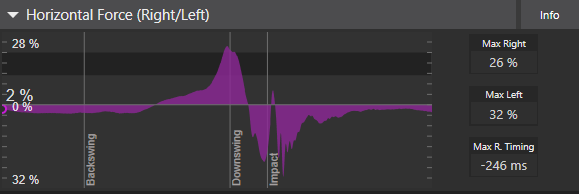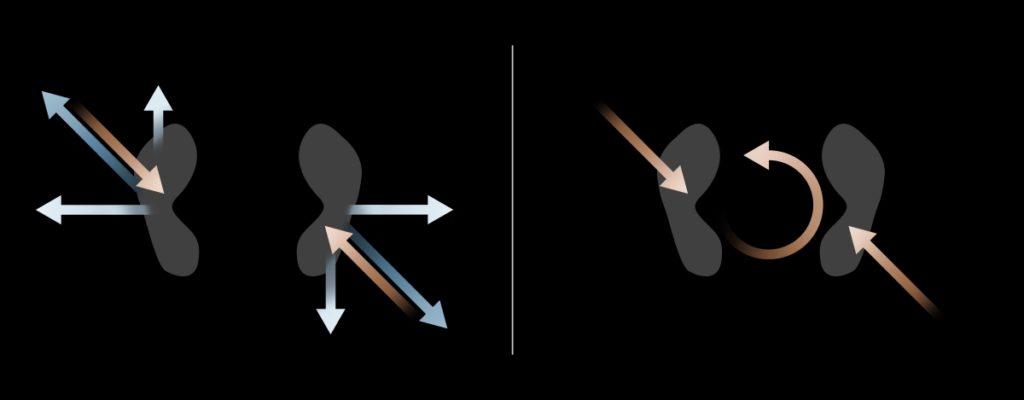Ground Reaction Force
The focus on ground reaction force (GRF) is continually increasing in golf, but we experience that there is still some confusion as to what it actually means. Considering the GRF is the basis of the force the golfer is able to utilize during the swing, understanding how it works is important when analyzing the swing.
The basic principle behind GRF is fairly straightforward: the laws of motion dictate that for every action there is an equal and opposite reaction. Throughout the swing, a force is exerted on the ground by the golfer. In response, the ground exerts a force of the same magnitude in the opposite direction on the golfer. This reaction force is always present as long as the golfer is in physical contact with the ground. Based on this principle, the Swing Catalyst 3D Motion Plate measures the force exerted on the ground by the golfer, broken down in three dimensions: one vertical and two horizontal (right/left and toe/heel).
By definition, force is the result of mass multiplied by acceleration. The vertical component of force (figure 1) is always affected by the constant acceleration of gravity. Therefore, when standing still at address, the vertical GRF experienced by the golfer is equal to the golfer’s weight (the force of body mass caused by gravity alone). However, throughout the swing the vertical force changes with the movement of the golfer, since it is affected not only by gravity but by the total acceleration. Based on the direction the golfer moves, the vertical force can be greater or lesser than the body weight. This principle is easily illustrated by bending the knees when standing on a bathroom scale (which calculates body mass from force and the known acceleration of gravity). At first the scale will briefly indicate a lower body mass due to negative acceleration. Then, as the downward movement slows, it will briefly indicate a higher body mass due to positive acceleration. Finally, when all movement has stopped, it will stabilize at the true body mass as there is no acceleration except that of gravity.

Figure 1: Vertical force relative to body weight throughout the swing, as shown in the Swing Catalyst software.
The horizontal components of force (figure 2 and figure 3) are indirectly affected by gravity, since they increase with vertical force. Imagine trying to slide a foot along a surface. The more force is exerted down onto the surface, the more difficult it becomes to slide the foot. With sufficient traction between the golfer’s feet and the surface, the horizontal force allows the golfer to push in one direction to move in the opposite direction (for example pushing to the right to move the body mass to the left at the beginning of the downswing for a right-handed golfer). In golf, the horizontal force is often referred to as shear force.

Figure 2: Right/Left horizontal total force relative to body weight throughout the swing, as shown in the Swing Catalyst software.

Figure 3: Toe/Heel horizontal total force relative to body weight throughout the swing, as shown in the Swing Catalyst software.
All three force components acting at the same time provides the golfer with the ability to produce torque (figure 4) about the vertical axis (see our previous article on the importance of torque): while vertical force is a prerequisite for horizontal force, the rotation itself is the result of horizontal forces acting in opposite directions at the feet (figure 5), with forces in the toe/heel direction primarily working to cause rotation and forces in the right/left direction primarily providing stability.

Figure 4: Torque throughout the swing, as shown in the Swing Catalyst software.

Figure 5: Illustration of torque as a result of unaligned horizontal forces in opposite directions (blue arrows = action, orange arrows = reaction).
Dr. David McGhie
